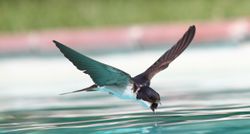ISSS608 2017-18 T3 Assign Lokesh Vairamuthu
|
|
|
|
|
|
|
|
About the VAST Challenge
The Visual Analytics Science and Technology (VAST) Challenge is an annual contest with the goal of advancing the field of visual analytics through competition. The VAST Challenge is designed to help researchers understand how their software would be used in a novel analytic task and determine if their data transformations, visualizations, and interactions would be beneficial for particular analytic tasks. VAST Challenge problems provide researchers with realistic tasks and data sets for evaluating their software, as well as an opportunity to advance the field by solving more complex problems.
Researchers and software providers have repeatedly used the data sets from throughout the life of the VAST Challenge as benchmarks to demonstrate and test the capabilities of their systems. The ground truth embedded in the data sets has helped researchers evaluate and strengthen the utility of their visualizations.
The VAST Challenge 2018 presents three mini-challenges for you to apply your visual analytics research and technologies to help a continuing troublesome state of affairs in a wildlife preserve.
These challenges are open to participation by individuals and teams in industry, government, and academia. We encourage your submissions and look forward to seeing your innovative approaches to solving these challenges using visual analytics.
Overview
Mistford is a mid-size city located to the southwest of the Boonsong Lekagul Wildlife Preserve. The city has a small industrial area with four light-manufacturing endeavors. Mistford and the wildlife preserve are struggling with the possible endangerment of the Rose-Crested Blue Pipit, a locally loved bird. The bird’s nesting pairs seem to have decreased alarmingly, prompting an investigation last year implicating Kasios Office Furniture, a Mistford manufacturing firm. Since the initial investigation, the situation has evolved: Kasios insists that they have done nothing wrong! They assert that grad student Mitch Vogel and his professors are mere media-seekers trying to draw attention away from their lackadaisical research. Kasios presents itself as an extremely eco-friendly organization. They have launched their own very public investigation into the issues raised last year and are reporting very different results! It’s time to apply your visual analytics expertise to help illuminate the path to good science.
The scenario for this challenge builds on last year’s but the challenges are new. Please see the VAST Challenge 2017 for additional background on this year's challenge! Readings from across the mini-challenges will help you with this year's effort. This year's scenario (the setting, the geography, the situation) are carried over to this year, however, you do not have to have participated in last year's challenge to work on this year's.
Mini Challenge 2
According to Kasios, those funny colored satellite images from the Preserve only prove that it is a diverse, changing habitat and that the peculiar images Mitch identified are not conclusive evidence of any wrongdoing. They argue that the other industries should be taking as good care of the area as Kasios corporate and its volunteer squads do year-round. To show their goodwill, Kasios reports that they recently donated staff time and money to refurbish ranger stations and campgrounds across the Preserve! Does Kasios have a case here? Perhaps some new visualization of river contaminants and analyses within the Preserve may help illustrate that the new Kasios story doesn't hold water (or does it?).
Questions
1. Characterize the past and most recent situation with respect to chemical contamination in the Boonsong Lekagul waterways. Do you see any trends of possible interest in this investigation? Your submission for this questions should contain no more than 10 images and 1000 words.
2. What anomalies do you find in the waterway samples dataset? How do these affect your analysis of potential problems to the environment? Is the Hydrology Department collecting sufficient data to understand the comprehensive situation across the Preserve? What changes would you propose to make in the sampling approach to best understand the situation? Your submission for this question should contain no more than 6 images and 500 words.
3. After reviewing the data, do any of your findings cause particular concern for the Pipit or other wildlife? Would you suggest any changes in the sampling strategy to better understand the waterways situation in the Preserve? Your submission for this question should contain no more than 6 images and 500 words.
